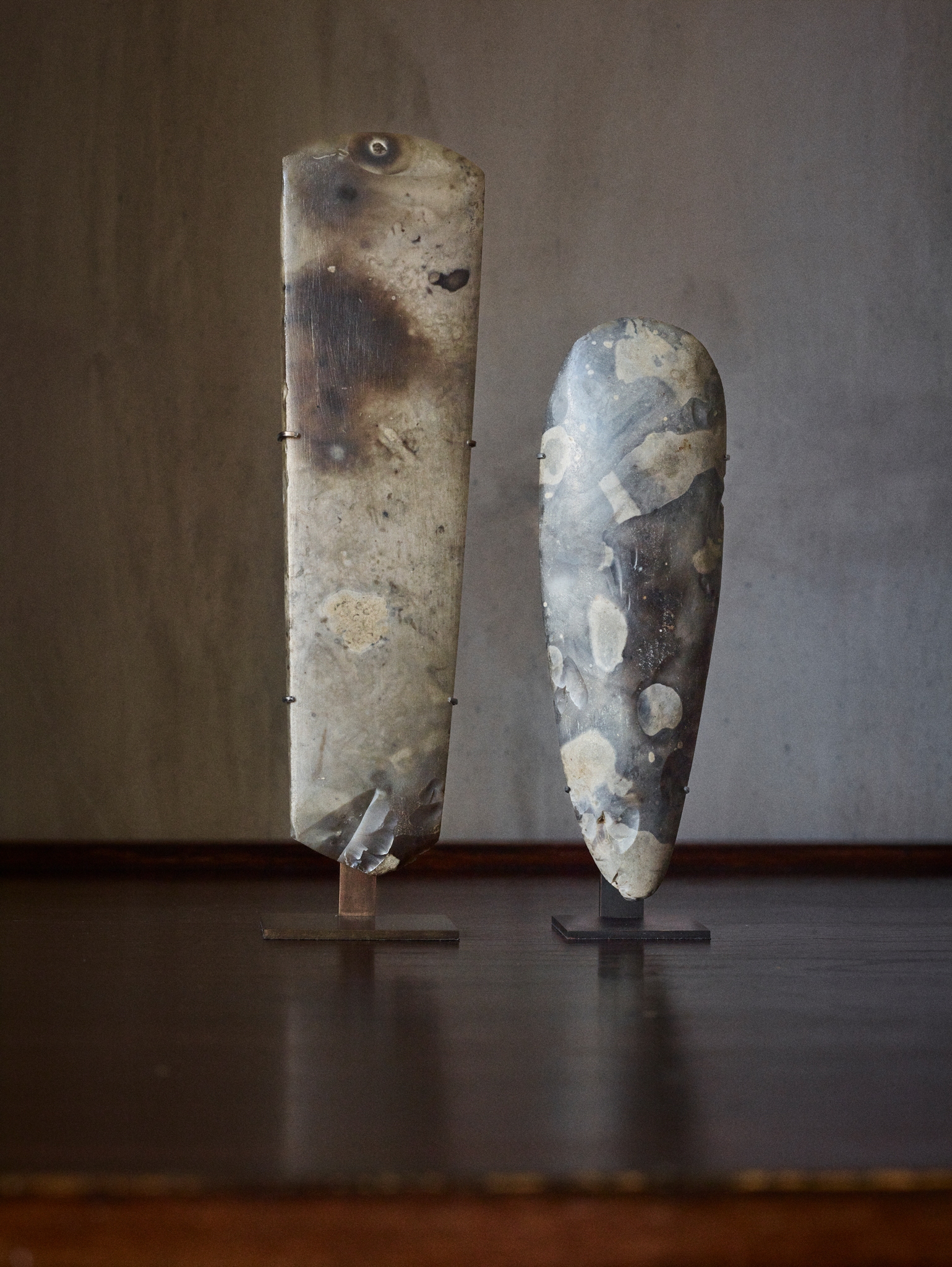BRITISH NEOLITHIC POLISHED AXEHEAD
KENT, UNITED KINGDOM, C. 4TH MILLENNIUM B.C.
Estimate: £3,000 - £5,000
Auction: 13 March 2025 from 13:00 GMT
Description
knapped and polished flint, of mottled grey colour, the cutting edge rounded, the butt tapering to a point, raised on a bespoke mount
Dimensions
25.4cm tall
Provenance
Private collection, London, United Kingdom, acquired on the UK art market
Robert Jay collection, United Kingdom, acquired prior to 1970
Accompanied by a copy of a letter from the British Museum dated to 1970
Footnote
“Throughout temperate Europe, the establishment of farming settlements required forest clearance on a substantial scale. These pioneers had to fell trees to create fields for arable crops and to provide timber for houses. In this new world the stone axe came to have huge significance. This simple tool form was prevalent across the continent. While functionally useful for all types of woodworking, stone axes appear to have been much more than essential, well-used tools. Many were completely polished to a shine after being roughly shaped. This process takes several hours of hard work using sand, water and a fine-grained polishing stone. Polishing the body of an axe does not improve its functional qualities as a cutting/chopping tool and it is likely that people did this to enhance the appearance of its surface, bringing out the aesthetic qualities of the stone. The stone used to make axes itself seems to have had special significance. It was often quarried from deep within the earth and some sources were possibly venerated through being invested with magical, mythical significance.”
Garrow, D. and Wilkin, N. (2022) The World of Stonehenge. London: British Museum Press. p. 39.

